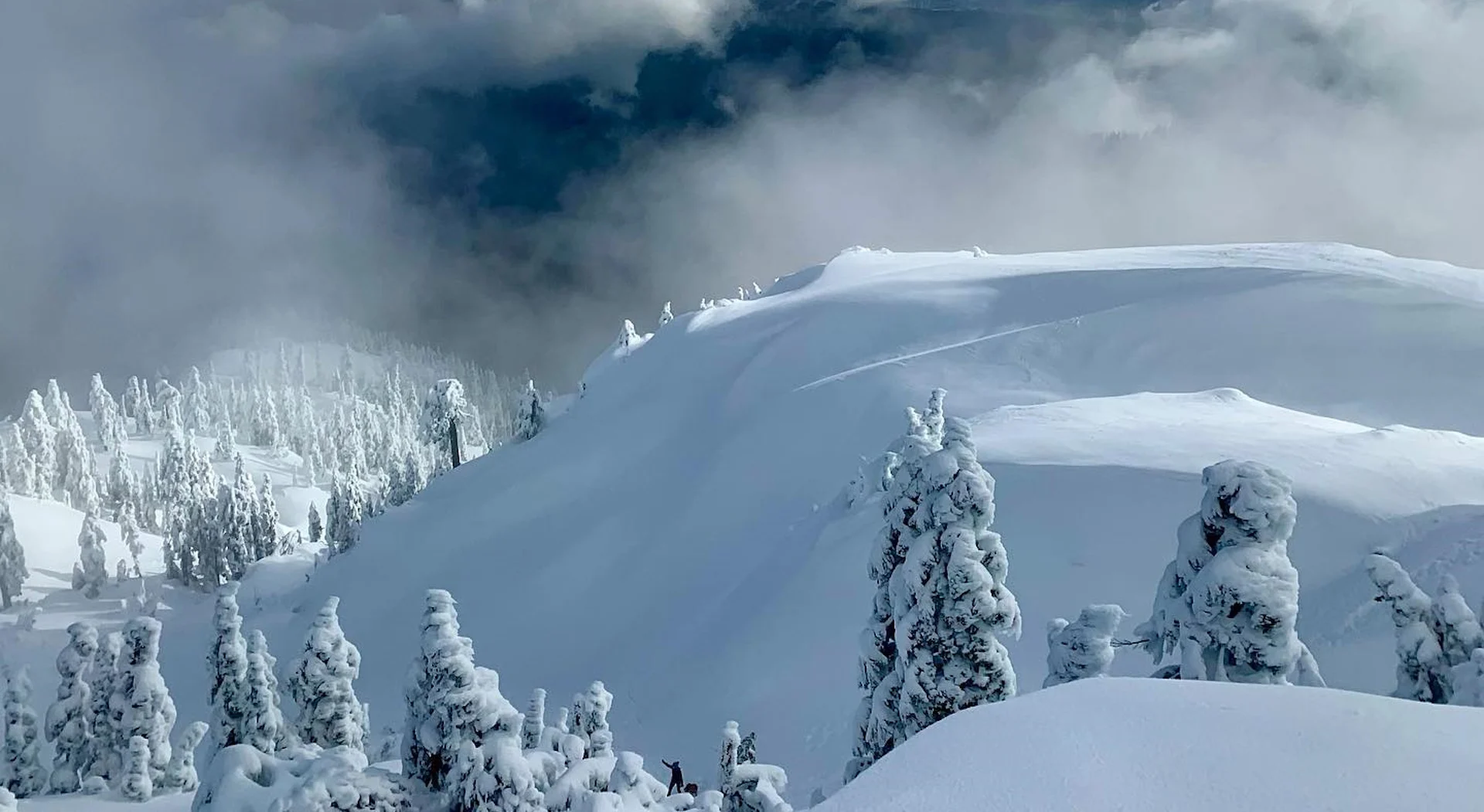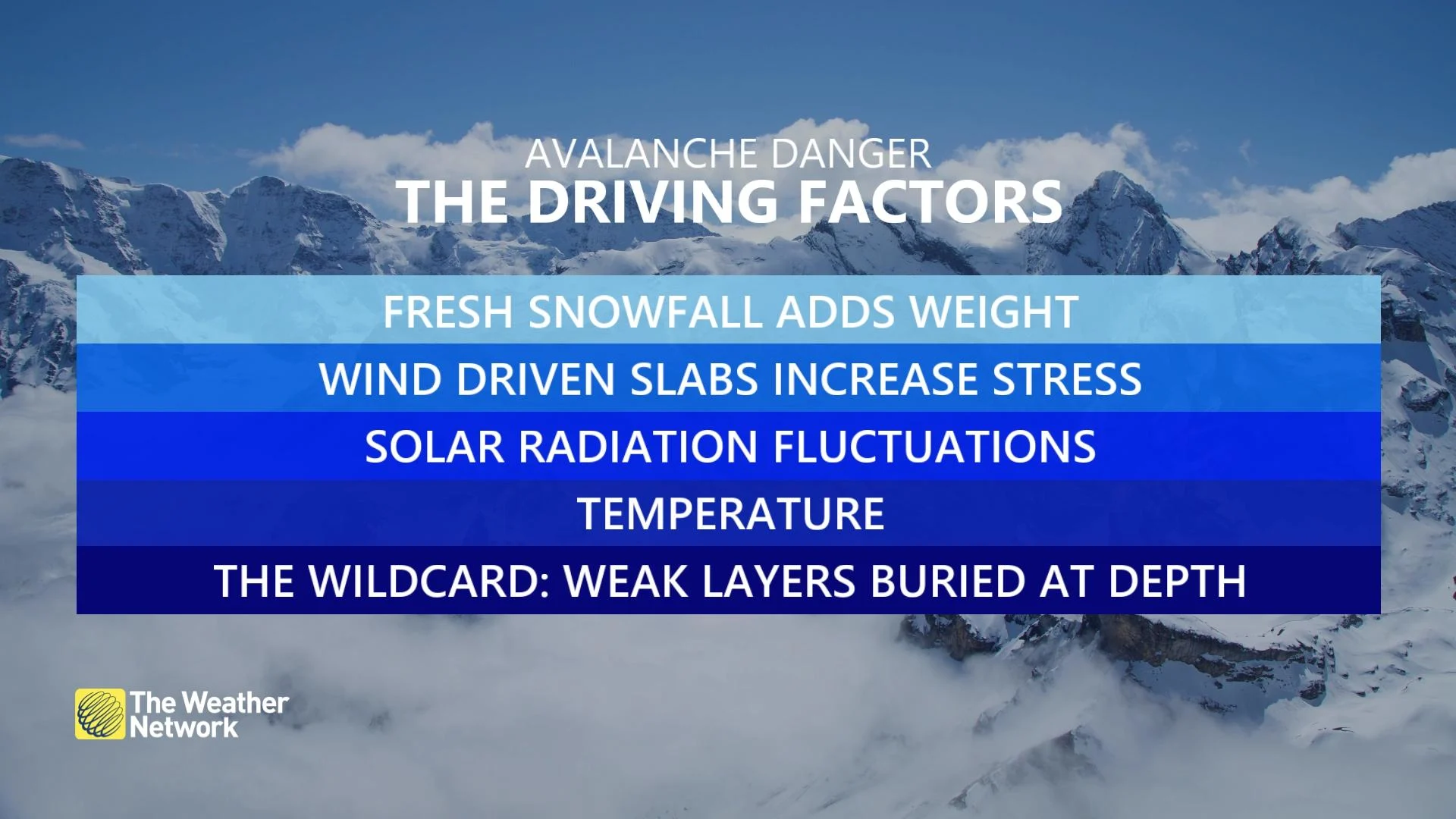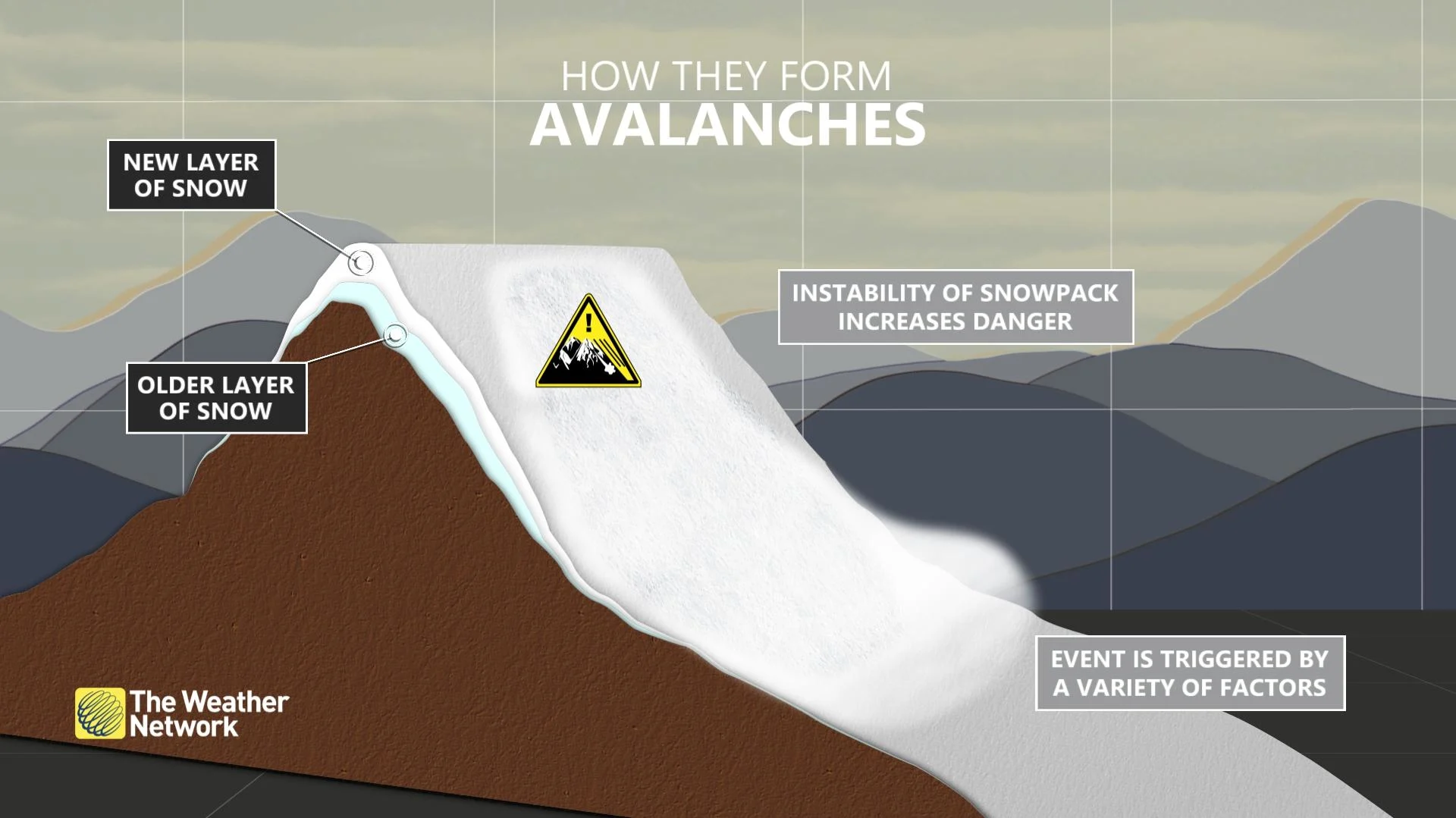
What is a sluff? These common slides spell danger in the mountains
Avalanches are a persistent risk on snow-covered mountains. Not all avalanches are gigantic, though, and even smaller ones are a serious hazard
Winter outings in the mountains are as rewarding as they can be dangerous. Dozens of skiers, snowboarders, snowmobilers, and climbers are stranded, injured, or killed by falling snow each season across Canada.
While most folks are familiar with tremendous avalanches that can engulf the entire side of a mountain, there are different types of snow slides that can endanger folks enjoying the wintry terrain.
One common type of slide is called a sluff. A smaller type of avalanche, sluffs can pose their own set of challenges across the backcountry.
DON’T MISS: Why March is so dangerous when it comes to avalanches

Avalanches are an entire field of study on their own. Weather conditions, terrain characteristics, activities on and around the mountain, and the composition of the snowpack itself all contribute to the type of avalanches possible and the risk of these potentially deadly slides.
Slab avalanches are the most dangerous. These slides occur when a thick, unstable layer of snowpack suddenly gives way, sending an immense mass of snow careening down the slopes with frightening speed. This type of avalanche is responsible for most mass-casualty events.
WATCH: Canada keeps highways safe with avalanche control unlike any other
But those hulking walls of snow straight out of the movies aren’t the only danger lurking in terrain. A smaller but common type of slide is called a sluff.
Sluffs are relatively small releases of loose snow atop the snowpack. These slides occur frequently on steeper slopes, especially where skiers and climbers often serve as the trigger that starts the release of loose snow. A sluff can grow in size and speed as it descends the slope and scoops up more snow off the surface.
MUST SEE: Canada's worst avalanche is the 1910 Rogers Pass disaster, a preventable tragedy

Despite their smaller size and localized nature, sluffs are still incredibly dangerous to anyone caught in the path of one of these slides. A person in the path of the flow can get knocked off their feet—an incredibly dangerous prospect when terrain traps are involved. Terrain traps are hazards like trees, rocks, and cliffs that increase the risk for traumatic injuries, as well as creeks and gullies that can collect snow and bury a victim even deeper.
A mountain climber fell to his death near Lake Louise, Alberta, in late January 2024 after he was struck by a sluff released from the rocks above him, according to a report by CBC Calgary.
What’s the best way to steer clear of the danger posed by sluffs? Avalanche Canada recommends skiing in short pitches to mitigate the risk of triggering a release, as well as ensuring you pull over to a safe spot until the sluff passes your location. Skiing on shallower slopes can also mitigate the risk of encountering slides.
Keeping up with the latest avalanche forecasts and warnings at avalanche.ca is a must for anyone heading into the backcountry during the cooler season.
Header image courtesy of Tannis Miller.











